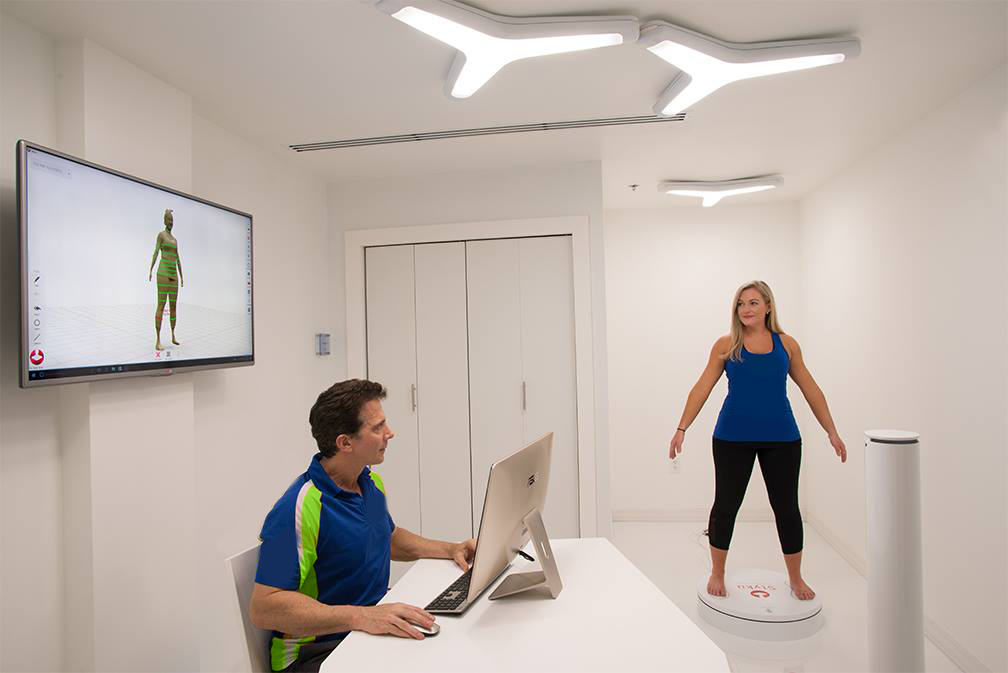The term “muffin top” has become quite popular in recent years, but what does it really refer to? In essence, a muffin top describes the excess fat that hangs over the waistband of pants, much like the top of a muffin spills over its cup. This phenomenon is prevalent among many individuals, regardless of their overall body shape or size. In this article, we will delve into the factors that contribute to muffin tops and explore various strategies to reduce them effectively.
Understanding the Muffin Top Phenomenon
The muffin top phenomenon encompasses both physiological and social aspects. Understanding why it occurs and how it affects people can provide valuable insights for those looking to manage or reduce their muffin top.
The Science Behind Fat Accumulation
Fat accumulation is a complex process influenced by several factors, including genetics, hormonal balances, and lifestyle choices. When the body carries extra weight, it often deposits fat in specific areas, such as the abdomen, leading to the appearance of a muffin top.
Research indicates that visceral fat, which surrounds the organs, is particularly concerning as it can impact overall health. Factors such as poor diet, lack of exercise, and stress can contribute to increased levels of this fat, thereby exacerbating the issue. Additionally, hormonal fluctuations, especially during periods of significant life changes such as pregnancy or menopause, can alter fat distribution patterns in the body, making some individuals more susceptible to developing a muffin top.

Why the Muffin Top is a Common Problem
The prevalence of muffin tops can be attributed to several modern lifestyle trends. Sedentary behavior, consumption of processed foods high in sugar and refined carbs, and a lack of physical activity are just a few contributors. Additionally, societal pressures regarding body image can lead to unhealthy behaviors that further perpetuate the cycle of weight gain.
Moreover, the rise of technology and the digital age has led to more people spending long hours in front of screens, whether for work or leisure. This shift has not only decreased physical activity levels but has also contributed to increased snacking and mindless eating habits. The convenience of fast food and the allure of sugary snacks can easily derail healthy eating patterns, making it challenging to maintain a balanced diet. Ultimately, muffin tops are not merely a cosmetic issue; they can signify underlying health risks, making it essential to address the problem holistically.
The Role of Diet in Muffin Top Formation
Diet plays a crucial role in determining where fat is stored in the body. By understanding the dietary choices that contribute to a muffin top, individuals can make informed decisions to combat it effectively. The relationship between diet and body fat distribution is complex, influenced by factors such as genetics, hormonal balance, and lifestyle choices. However, by focusing on dietary habits, one can significantly impact their body composition and overall health.
Foods That Contribute to Belly Fat
- Processed foods high in sugar and trans fats
- White bread and pastries made from refined flour
- Sugary drinks like soda and juice
- Fried foods and high-calorie snacks
- Excessive alcohol consumption
These types of foods can lead to excessive calorie intake and disrupt metabolism, resulting in fat accumulation around the waist. The high sugar content in processed foods can trigger insulin spikes, which may promote fat storage, particularly in the abdominal area. Additionally, trans fats found in many fried and packaged foods can lead to inflammation, further complicating weight management efforts. Being mindful of these food choices can aid in muffin top reduction.
Nutritional Strategies for Muffin Top Reduction
Adopting a well-balanced diet rich in whole foods is essential for reducing a muffin top. Here are some effective strategies:
- Incorporate plenty of fruits and vegetables to increase fiber intake.
- Choose whole grains over refined grains to stabilize blood sugar levels.
- Opt for lean protein sources, such as chicken, fish, and legumes, to support a healthy metabolism.
- Stay hydrated with water, as it can help control hunger and support bodily functions.
- Limit processed and sugary foods to avoid unnecessary calorie consumption.
Implementing these nutritional strategies can help target the underlying causes of muffin tops, leading to sustainable weight loss and improved overall health. Moreover, incorporating healthy fats, such as those found in avocados, nuts, and olive oil, can promote satiety and help balance hormones that regulate appetite. Regularly consuming fermented foods like yogurt and kimchi can also support gut health, which is increasingly recognized as a vital component of weight management and metabolic function. By focusing on a holistic approach to nutrition, individuals can create a more favorable environment for fat loss and overall well-being.

The Importance of Exercise in Reducing a Muffin Top
Exercise is a pivotal component in the battle against muffin tops. Not only does it help burn calories, but it also strengthens the muscles, contributing to a more toned appearance. Regular physical activity can also enhance mood and energy levels, making it easier to stick to a healthy lifestyle. Furthermore, exercise releases endorphins, which can help combat stress and emotional eating, often linked to weight gain around the midsection.
Effective Workouts for Targeting the Muffin Top
Certain types of exercises can be particularly effective for reducing muffin tops. These include:
- Core-strengthening workouts like planks and Russian twists
- High-intensity interval training (HIIT)
- Strength training exercises focusing on the abdominal and oblique muscles
- Yoga or Pilates for improved core stability and flexibility
Incorporating a variety of these exercises into a regular workout routine can enhance fat loss and improve body composition. Additionally, engaging in activities like cycling or swimming can provide a full-body workout while still focusing on the core. These exercises not only target the muffin top but also contribute to overall cardiovascular health, making them a great addition to any fitness plan.
The Role of Cardio and Strength Training
Both cardiovascular and strength training workouts play critical roles in reducing fat accumulation. Cardio exercises increase heart rate and help burn calories, while strength training builds muscle mass, which can boost metabolism. This combination is essential because muscle tissue burns more calories at rest compared to fat tissue, meaning that the more muscle you have, the more calories you burn throughout the day.
A balanced exercise regimen that combines both types of training can effectively target muffin tops and promote overall physical fitness. Moreover, consistency is key; aiming for at least 150 minutes of moderate-intensity aerobic activity each week, along with two days of strength training, can yield significant results. As you progress, consider increasing the intensity or duration of your workouts to continue challenging your body and preventing plateaus in your fitness journey.
Lifestyle Changes to Help Reduce a Muffin Top
In addition to diet and exercise, lifestyle choices significantly affect muffin top formation. Making conscious changes to daily habits can lead to effective results.
The Impact of Stress on Belly Fat
Chronic stress can lead to weight gain, particularly around the midsection. When stressed, the body releases cortisol, a hormone linked to increased appetite and fat storage. To combat this:
- Develop stress-relief practices such as meditation, deep breathing, or yoga.
- Engage in regular physical activity, which can alleviate stress levels.
- Establish a support system with friends or family to discuss feelings and experiences.
By managing stress levels, individuals can effectively reduce the risk of gaining unwanted belly fat. Additionally, incorporating mindfulness techniques into daily routines can further enhance emotional resilience. Mindfulness encourages individuals to focus on the present moment, reducing anxiety and promoting a sense of calm. This practice can be as simple as taking a few minutes each day to breathe deeply and reflect on positive aspects of life, which can significantly mitigate stress responses.
The Importance of Sleep in Weight Management
Quality sleep is often overlooked in discussions about weight management. Lack of sleep can lead to hormonal imbalances that may result in weight gain. Aim for:
- 7-9 hours of quality sleep per night
- A consistent sleep schedule to regulate the body’s internal clock
- A comfortable sleep environment free from distractions
Improving sleep hygiene can enhance metabolism and support fat loss efforts, including reducing muffin tops. Moreover, establishing a pre-sleep routine can signal to the body that it’s time to wind down. Activities such as reading a book, taking a warm bath, or practicing gentle stretches can promote relaxation and improve sleep quality. Furthermore, limiting screen time before bed is crucial, as the blue light emitted by devices can interfere with the body’s natural sleep-wake cycle, making it harder to fall asleep and stay asleep throughout the night.
Medical and Surgical Options for Muffin Top Reduction
For some individuals, lifestyle modifications alone may not yield the desired results in muffin top reduction. In such cases, medical and surgical options may be considered.
Non-Invasive Procedures for Fat Reduction
Several non-invasive procedures can help reduce muffin tops without the need for surgery. These include:
- Cryolipolysis (CoolSculpting) – freezing fat cells
- Ultrasound therapy – using sound waves to target fat
- Radiofrequency treatments – promoting skin tightening and fat loss
These procedures typically involve minimal downtime and can complement a healthy lifestyle for improved results. Many patients report satisfaction with their outcomes, often noticing a gradual improvement over several weeks as the body naturally eliminates the treated fat cells. Additionally, these non-invasive methods are generally safe and can be performed in a variety of clinical settings, making them accessible options for those seeking to enhance their body contour without the risks associated with surgery.
When to Consider Surgery for Muffin Top Removal
In circumstances where fat persists despite lifestyle changes and non-invasive treatments, surgical options such as liposuction or a tummy tuck may be explored. Liposuction involves the removal of fat deposits through a suction technique, which can be particularly effective for localized areas like the muffin top. On the other hand, a tummy tuck not only removes excess fat but also tightens the abdominal muscles, offering a more comprehensive solution for those with significant skin laxity. It is vital to consult a qualified medical professional to evaluate potential risks and benefits before proceeding with surgery.
Overall, muffin tops are a common issue that can be addressed through a combination of dietary adjustments, exercise, and lifestyle changes. By taking a comprehensive approach, individuals can work towards reducing their muffin tops effectively. It’s also important to consider psychological factors; many individuals find that addressing their muffin top not only improves their physical appearance but also boosts their self-esteem and body image. Engaging in support groups or counseling can further enhance the emotional journey of body transformation, allowing individuals to celebrate their progress and stay motivated.
In conclusion, understanding the factors contributing to muffin tops and implementing targeted strategies can lead to sustainable improvement. With dedication and the right approach, achieving a healthier body and a more confident self-image is entirely possible.






